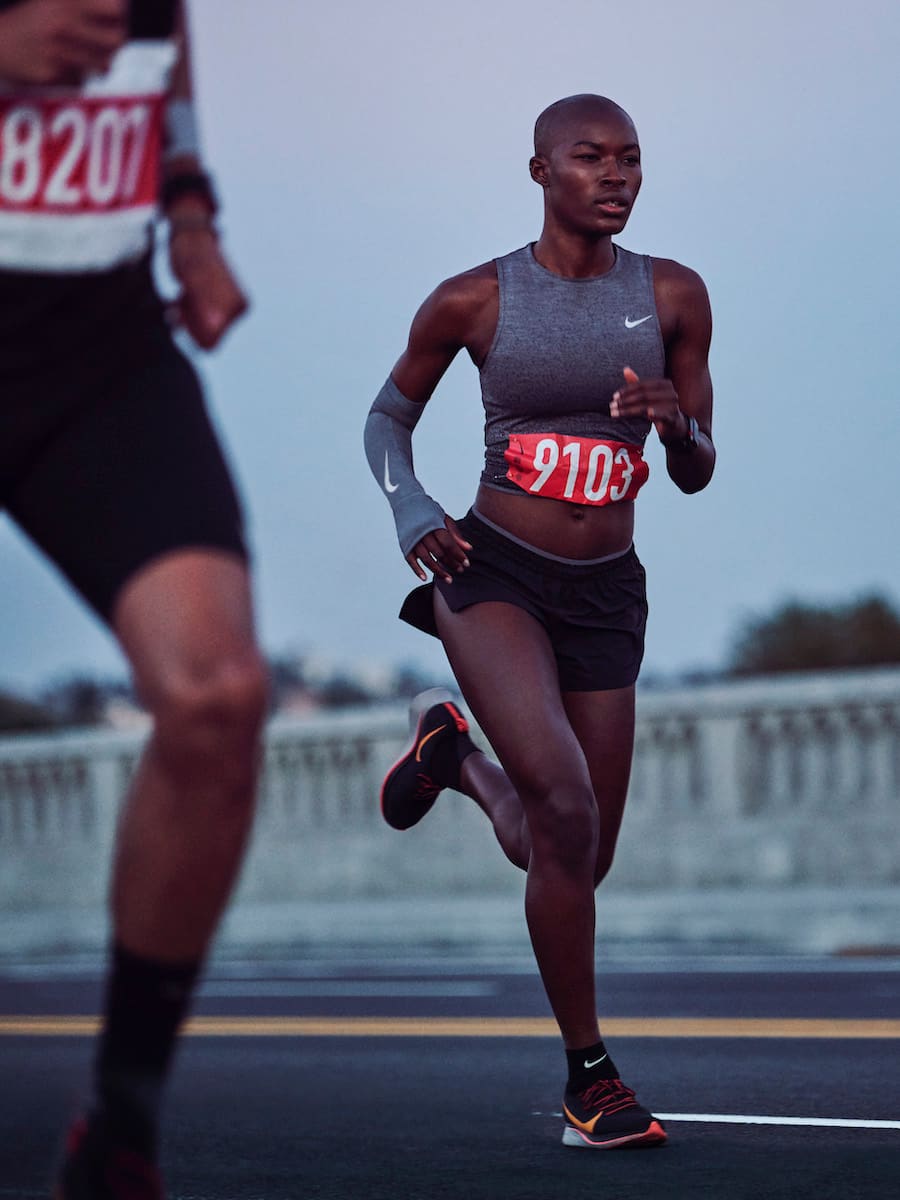
- Tips
- Look for comfortable, state-of-the-art material in your socks, shorts, and shirts.
- Be prepared to spend some money, it is an investment and these clothes will last you a significant amount of time.
- When shopping for shoes, bring in insoles from a pair of your shoes you wear often to show the sales team where you need the most support.
- Introduction: Dressing for the Big Day
So you’ve trained for the past year for your marathon and now the race day is steadily approaching. With the short runs, long runs, and interval training to think about you barely had time to consider one of the most crucial parts of running a marathon: your race-day attire and running shoes. What you wear on race day can end up making or breaking your personal time. Whether you’re looking to stand out in the crowd or just want to make it to the finish line, it’s important you feel comfortable in your clothes and shoes.
“If you’re a runner who has been pounding the pavement for years then you know what works for you,” states Paul McRae, long-time award-winning runner and owner of Personal Running Solutions. However, if you’re a first-time marathoner “it's sometimes hard to take a recommendation on apparel from a sales clerk who keeps looking at their watch counting down their mall escape.”
The key to finding the right apparel is research. Visit your local specialty store or talk to some past marathon runners to get an idea of what they’ve found works and doesn’t work. Those who have experienced the run will be able to offer better insight than anyone else. Also, be prepared to spend some cash. Running clothes are an investment because you’ll spend a bit of a fortune upfront but the clothes, socks, and shoes can last up to a year. Ready, set, start shopping!
- Step 1: Running Shoes That Fit and Function
Shoes are one of the most crucial elements to a good race. If you’re in the wrong shoes, you will inevitably feel it at some point in the run. It will effect for your form, posture, and muscle strain. To really make the most of your running shoes, go into your closet first and check out the insoles of a pair of shoes you often wear. Where do you place the most pressure? Is it the heel or the tops of the toes? Bring that insole to your local running store and show the staff member who is assisting you. He or she will be able to see where you need the most support.
You need to purchase your race-day shoes at least a month in advance. No, you can’t wear the shoes you’ve been training in because the support will be lost come time for the marathon. By buying your shoes a month in advance, it will give you ample time to break them in. Wear them everywhere, to the grocery store, to work, or to school. Wear them everywhere but on your runs.
“An easy start is to look at the brand currently on your feet, if you’ve kept them for a while and are happy with them, then it is probably not a bad idea to stay with that brand,” says McRae.
With the right pair of shoes comes the ideal pair of socks. Invest in running socks. Yes, they’re more expensive than your typical 12-pack for three dollars style but they last a lot longer. Running socks are great because they’re not only more supportive, but they also wick sweat from the soles of your feet. In doing so, you will decrease the chance of athlete’s foot. Also, they’re more padded to prevent blisters from popping up before the big day.
- Step 2: Shirts and Shorts That Make the Runner
The ideal running outfit will leave you feeling comfortable from head to toe. The last thing you need to worry about when you’ve hit mile 13 is how itchy and sweaty you feel. Look for shirts, tanks, and bra that wick away sweat. Nike sells an incredible line of clothing that wicks away sweat. This will keep your body temperature level during the run. Look for the wicking material in both shirts and shorts.
When getting dressed, keep in mind that the more layers the better. Marathon season tends to start while the weather is still a bit cooler. So bring layers and just toss layers to the ground if needed. Don’t worry about losing something because oftentimes the clothes are picked up by race volunteers and given to charity. It’s always better to toss layers than wish you had them.
No matter how many layers you choose to wear, make sure each of them are lightweight. You don’t want something that’s too heavy or you will feel constricted in your movement. "I normally race in my marathon clothes before the race to feel if they're comfortable," suggests Sara Wells, the 2003 U.S. National Marathon Champion. "Also wear the getup on at least one semilong run.
- Step 3: Accessories and Gear
You wouldn’t think accessories would be too important during a run, but you’d be wrong. You need to stock up on essential accessories to get through your run. First and foremost for men are nipple guards. Just ask Ryan Reynolds. When watching a group of runners finishing the New York Marathon he noticed something he had never seen before. "I saw guys coming in to finish with bleeding nipples. Why in the hell were their nipples bleeding?" Well, that's because they weren't wearing nipple guards. The continual chaffing of your shirt combined with your skin can lead to this painful experience. Don’t let that be you.
Other important accessories include headwear and gloves. If you like to listen to music while you run, then bring your headphones in when you shop for headwear. Headwear is essential because of its function. “In winter you need something on your head to keep the warmth in, in summer you need to protect your head against the sunshine,” states McRae. Whatever your personal preference: a cap or a hat, you need to make sure it’s comfortable and accommodating to your headphones if needed.
Same goes with gloves, make sure they’re warm and comfortable but most importantly that they fit. You don’t want to be tugging on them throughout the run.
When you get ready to head out to do some serious marathon shopping, just keep in mind that you don’t have to do it all at once. Plan ahead and take it step by step so you don’t feel too overwhelmed.
When that day comes and you’re on the line waiting for the gun to go off, just be confident, comfortable, and ready to give it your all!
